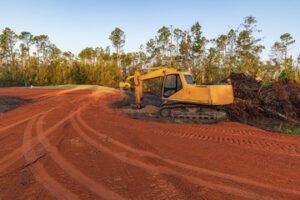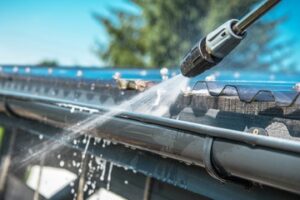Land Clearing prepares the land for construction projects, minimizing the time required to get a project underway. It also helps protect the environment by reducing the risk of wildfires and promoting plant growth. It also reduces the risk of pest infestations by eliminating diseased or invasive plants.

In addition, clearing a site makes it more accessible to builders and other workers. It also reduces fire hazards by removing dead vegetation and accumulated debris.
The cost of clearing land varies depending on the size of the area and the method used. Whether you’re clearing land for construction, agriculture, or simply improving the appearance of your property, proper planning is essential to minimize expenses. Here are some tips to help you plan and budget for a successful project.
The most important factor in determining the cost of land clearing is the size of the area to be cleared. Larger areas require more time and resources to clear, which can drive up costs. Additionally, rocky terrain or difficult-to-reach areas may require specialized equipment and increased labor costs, further increasing the overall price.
In addition to the actual clearing process, there are other associated costs, such as debris removal and grading. These additional steps are necessary to prepare the site for construction, ensure proper drainage, and shape the soil for foundation support. These steps are essential for ensuring the long-term health of your land, which will ultimately save you money in the future.
Another important consideration is the accessibility of the site and its location. Land that is easily accessible will require less time and resources to clear, resulting in lower costs. However, if the land is in a remote location or requires a special permit, it will likely cost more to clear.
Finally, regulatory requirements must also be considered when estimating the cost of clearing land. The requirements vary by state, and it’s crucial to understand these regulations in order to minimize your environmental impact. These costs can include things like landfill fees, pollution control equipment, and environmental management strategies.
In addition, it’s important to consider the type of vegetation and terrain that needs to be removed. For example, a septic tank installation may require the removal of tree stumps and roots, which can add to the overall cost of the project.
The final cost of a land clearing project will depend on many factors, including the size and location of the area, regulatory requirements, and the type of vegetation. In addition, the final cost will be impacted by any other site-specific concerns, such as the presence of utilities or structures on the property. It’s important to assess these issues early in the planning process, as they can increase the cost of your land clearing project.
Environmental impact
Land Clearing is a common practice that can have many environmental impacts. It can affect the biodiversity of plants and animals, increase soil erosion, and pollute waterways and rivers. It can also lead to higher greenhouse gas emissions, which has an impact on the climate. These impacts can be mitigated by implementing sustainable practices, including using environmentally-friendly machinery and avoiding the use of chemical herbicides.
While land clearing is necessary for agriculture, infrastructure development, and other purposes, it should not be done at the expense of the environment. Many people depend on the environment for food, shelter, and other resources. Without healthy ecosystems, we will have a difficult time supporting ourselves in the future.
Unfortunately, land clearing is a significant cause of habitat destruction and biodiversity loss. It is important to take the time to evaluate the environment and its ecological importance before beginning a clearing project. This will ensure that the land is cleared properly and does not have long-term consequences.
The first step in evaluating the environmental impact of land clearing is to determine what type of vegetation and wildlife are present on the property. Then, you can choose the most appropriate method for removing it. Several methods are available, including chainsaws and mechanical equipment, chemical herbicides, and controlled burning. All of these options can have an impact on the environment, so it’s important to select the best option for your needs and budget.
Besides being harmful to the environment, land clearing can have other health and safety impacts. For example, overgrown vegetation can be a breeding ground for mosquitoes that carry diseases such as dengue fever and malaria. Additionally, wildfires can spread more easily when there is dense vegetation on the ground. Land clearing can also have a negative impact on the climate. As trees and plants die, their carbon content increases in the atmosphere. This increases the greenhouse gases in the air, which leads to an increase in global temperatures.
In order to minimize the environmental impact of land clearing, it is essential to use sustainable methods. For example, selective clearing techniques can be used to remove only certain types of vegetation while preserving other areas. The use of lighter machinery can also reduce soil disturbance and minimize environmental damage. In addition, projects should be planned outside of the breeding season to prevent disruption to wildlife.
Environmental regulations
Clearing and grading land are essential parts of a construction project, laying the groundwork for a successful outcome. However, the process is also a complex endeavor that can have significant environmental impacts if not done properly. To minimize this impact, it’s crucial to understand the different methods available and choose environmentally friendly techniques. Taking the time to evaluate your site and discuss your goals with professionals will help you determine the best approach for your project.
The first step in a land clearing project is to identify the boundaries and current vegetation on the site. This will help you determine what kind of clearing method is appropriate. There are a variety of land clearing options available, including traditional and modern methods. Traditional methods are typically cheaper and require less time, while modern techniques utilize more advanced equipment to provide more efficient results.
During the clearing process, it’s important to take safety precautions to protect workers and machinery. This includes identifying and marking potential hazards, such as unstable soil and overhead power lines. Proper safety protocols will also help minimize damage to the environment and wildlife habitats.
Land clearing can have a significant impact on the surrounding ecosystem, affecting soil quality and water cycles. It can also cause loss of biodiversity and greenhouse gas emissions. However, it can have positive economic effects by increasing agricultural production and creating new housing, commercial, and industrial space.
Local regulations and zoning laws play an important role in the clearing process, dictating when, where, and how much vegetation can be removed. For example, Rhode Island Woods regulations prohibit clearing of vegetation in or near wetlands and require a vegetative buffer around watercourses.
Erosion control is an important part of land clearing, as it prevents sediment runoff into nearby water bodies. During the clearing process, erosion control techniques such as silt fencing, seeding with native plants, and erosion control blankets can be used to stabilize disturbed areas and promote vegetation growth. These measures can be implemented throughout the clearing process, as well as during subsequent construction phases.
Many land clearing companies use environmentally-friendly practices to reduce their impact on the ecosystem. These techniques include selective clearing, mulching, and biodegradable materials. Choosing these methods helps maintain the natural balance of the ecosystem while providing the benefits of cleared land. In addition, they can reduce costs by eliminating the need for costly machinery repairs and replacements.
Site evaluation
Land clearing is the first physical step in any construction project, laying a foundation for everything that follows. Effective land clearing requires careful site evaluation, attention to environmental regulations, and experienced professionals. There are many different techniques for clearing land, including mechanized equipment and traditional manual labor. The method chosen depends on the type of project and the availability of resources. The goal is to prepare the site for construction, enhancing drainage systems and eliminating potential obstacles that can damage foundations and delay building activities.
The land evaluation process begins with a basic survey of the climate, soils and vegetation of an area. It may also compare land performance with different types of uses. These comparisons can be between different agriculture or forestry practices, or even to new forms of use. Regardless of the specifics, the evaluation always incorporates economic considerations.
During the site evaluation, an expert will examine the landscape and identify any potential impacts of the project. They will then develop a detailed plan for clearing, outlining methods and equipment required. They will also check for any permits and comply with local regulations. They will then clear the land, removing trees, brush, rocks and old buildings. The remaining debris is often turned into mulch for site use, reducing waste and promoting sustainability.
In addition to providing a stable foundation for construction, land clearing and grading can also boost property value. Cleared land is more visually appealing and can attract potential buyers and tenants, making it a valuable asset in real estate. Additionally, it can help reduce fire hazards by minimizing the amount of vegetation, and it can improve drainage systems to prevent water accumulation that could cause foundation problems or delay construction timelines.
The key to successful land clearing is to balance speed with environmental considerations. This allows contractors to clear land quickly while still retaining the natural landscape features that are beneficial for construction projects. The use of specialized equipment is also important, allowing contractors to clear the land more precisely and align it with the construction blueprint. This ensures that the final product will be in line with the desired design and saves time and money on rework.


